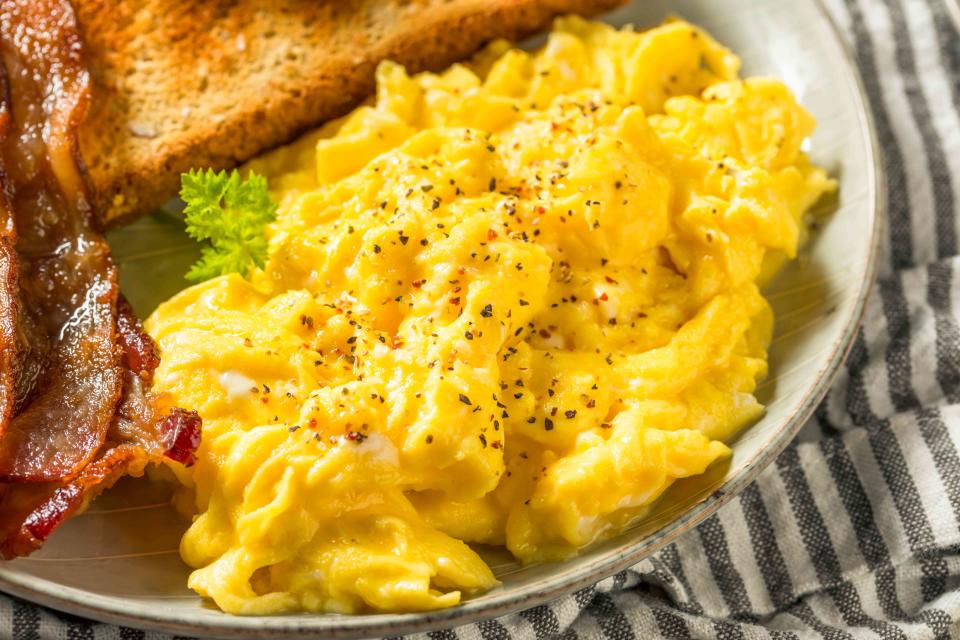The 1-Ingredient Upgrade for Fluffier Scrambled Eggs (It’s Already In Your Pantry)
This simple trick from cookbook author J. Kenji López-Alt makes a big difference!

Simply Recipes / Getty Images
My go-to method for making scrambled eggs is to add ricotta and cook them low and slow in a little butter until perfectly creamy. Sounds pretty foolproof, right? It is, but sadly, as a mom of a new baby with a very sensitive tummy, I’ve recently had to cut back on dairy. My days of using butter and cheese to avoid rubbery eggs are on hold for now.
That said, my need for protein has never been greater. I am still craving fluffy scrambled eggs! What’s a hungry mother to do? It turns out the answer is already sitting right on my kitchen counter: salt.
To be fair, the secret ingredient is sitting on my counter in a salt well, but the idea comes from a cookbook sitting on my bookshelf, The Food Lab by J. Kenji López-Alt. In an extensive chapter called "Eggs, Dairy, and the Science of Breakfast,” Kenji goes into great detail on how to get tender scrambled eggs without adding dairy.
It turns out that much like many wonders of the food world (Prosciutto, I’m looking at you!), all you need for superior fluffy scrambled eggs is salt and a little patience. Of course, I have always salted my eggs right before adding them to the pan, or while they cooked, but I’d never salted them in advance. And that's where the trick lies.

Simply Recipes / Sally Vargas
How I Make Better Scrambled Eggs (No Dairy Required)
Kenji's trick for better scrambled eggs goes something like this: Crack your eggs into a bowl, add however much salt you normally do to your eggs, whisk the eggs, and let them sit out on the counter for 15 minutes. After that, cook them how you normally do. Easy!
The Science of Salting Your Eggs
Salting and whisking the eggs 15 minutes in advance of cooking them changes the texture of the eggs. Kenji explains the scientific reasoning behind this comprehensively in the cookbook, and what I quickly gathered is that the salt breaks up the proteins in the yolk as it sits, which prevents them from clumping together too tightly as they cook. This also helps avoid getting "weepy" scrambled eggs that release water.
What I love most about this tip is that my kids and I saw the science at work. As my salted scrambled eggs sat, we could see them go from a buttery opaque yellow to a translucent orange. Kenji explains that this color shift is the salt at work. When cooked, the scrambled eggs should have soft, fluffy curds that aren't rubbery or watery.
While my kids are still not the biggest fans of scrambled eggs, they loved seeing this real-life science experiment. My eggs were so light and fluffy that I almost (almost!) didn’t even miss the cheese.
Enjoy Some Bacon With Your Eggs

Simply Recipes / Sally Vargas
Read the original article on Simply Recipes.